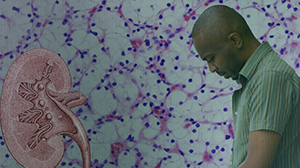NEW YORK (Reuters Health) – Total extraperitoneal inguinal hernioplasty (TEP) is associated with less chronic pain and higher patient satisfaction compared to the Lichtenstein open surgical repair, according to a report in the March issue of Archives of Surgery.
Furthermore, when experienced surgeons perform the repairs, hernia recurrence rates are lower after TEP. “Therefore, TEP should be recommended in experienced hands,” the authors advise.
Dr. Hasan H. Eker, MD, at the Erasmus Medical Center in Rotterdam, the Netherlands, and colleagues note that few studies have looked at outcomes of endoscopic vs open hernia repair. For the current study, the team assessed long-term outcomes in 660 patients who were randomized to TEP or the Lichtenstein tension-free mesh repair.
At 5 years after surgery, chronic pain rates were 28.0% in the Lichtenstein group compared to 14.9% in the TEP group (p=0.004), the authors found. Respective rates of numbness and sensibility disorders at the repair site were 21.7% versus 1.2% (p<0.001).
The cumulative rate of hernia recurrence overall was not significantly different, at 8.1% after Lichtenstein repair and 4.9% after TEP (p=0.10), the investigators report. However, they found that when only experienced surgeons’ outcomes were evaluated, the corresponding rates were 4.2% versus 0.5% (p=0.04).
Patient satisfaction scores on a 0-10 scale were 8.0 in the Lichtenstein group and 8.5 in the TEP group (p=0.004), according to the report.
While not providing details, Dr. Eker and colleagues note that operative costs were higher for TEP but total costs were similar for the two procedures.
They also highlight the experience level of the surgeon as an independent risk factor for hernia recurrence. Their study design required a surgeon with substantial experience to be present at or perform the TEP procedures. “In retrospect,” they comment, “we wonder if the requirement of 30 procedures was sufficient. Since the beginning of our study, some authors have reported 80 to 250 procedures before notable improvements occur in surgical outcomes after TEP.”
SOURCE:
Arch Surg 2012;147:256-260.




